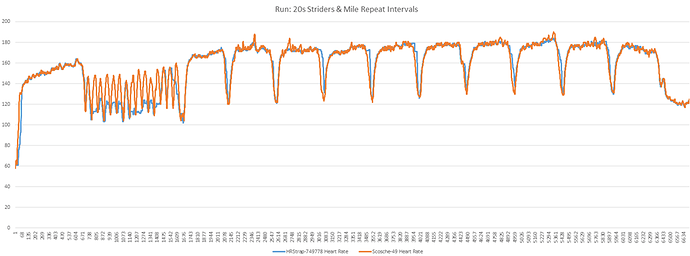AT-Threshold
Nope.
MHR is just that: it’s the max that YOUR heart can pump. Note that while there is the 220 minus age formula, this is only the average and it can vary a lot: e.g. my brother in law has a max of about 220 and he’s 35! Basically, you will (probably) never actually see your MHR; it’s the theoretical limit, i.e. maximum. There’s a grueling test that athletes sometimes do, but it you have to be well-rested and on your best day, and then you push yourself so hard that you almost puke… But this isn’t so important to get it exact.
Yes, or rather, that your MHR is at least 186.
Well, I haven’t been using mine for unicycling so I can’t really comment there, but I trained for many years for both cycling and running with a HRM. In general, your heart rate while running is a fair bit higher than for cycling. Supposedly this is because in running you use a larger number of muscles as well as also have to support your full body weight. Using this same reasoning, then unicycling should be in between but probably closer to running: you use more muscles than bicylcing (stomach, back, shoulders, hips) and maybe even more than running, plus you have to support more of you weight than cycling as you don’t put as much weight on either the seat or handlebars as when cycling.
If you’re really interesting in training well with a HRM, the really important number is you lactic threshold or anaerobic threshold (mostly cited as “AT”). This is the level below which your body is primarily operating in an aerobic manner (i.e. burning energy that can be replenished as long as you have and/or continue to receive food and oxygen and the energy is released from both and it “long-term replenishable”, meaning you can go for many hours, e.g. a marathon) and above which is primarily anaerobic (without oxygen) meaning that you are using other short-term energy sources that also result in biproducts (lactic acid) that then have to be removed from your system by the body and limit your work afterwards. Within minutes above your AT, lactic acid builds up in your system and greatly reduces your potential: e.g. jelly-legs. Plus these energy sources are depleted in minutes and then take hours or days to rebuild. Think of a 100m dash and why you cannot sustain this pace for 10km or more: in running the 100m dash at full speed you are almost fully anaerobic so it is unsustainable. Running a 10K or a marathon is a totally different thing as it must be done predominantly aerobically (or else you won’t even finish).
Note that AT is also sport-specific: e.g. is usually a little higher for running than cycling as well as being higher for sports in which you train a lot (as your body adapts from training to be better at that sport).
There are a few lab/studio-type tests to determine you AT-Threshold and a few formulas, although these are very dependent on your level of training. A few years ago when I was around 30, I had a MHR of low 190s and an AT-threshold for cycling of 165, an AT for running of about 170. My most significant measure for my workout intensity as well as needed rest for the following days was: Training time over AT: for an aerobic workout I would have 0-1 minute over AT; a moderate workout 1-5 minutes over AT; and >10 minutes over AT meant that I was totally worked and would need 1-3 rest and recovery days.
You can also roughly estimate your AT by yourself while training with a HRM, as it corresponds to the max HR level at which you can still comfortable hold a conversation (as above this you are literally using all the oxygen you can get and don’t have any extra for talking).
The other huge training indicator (of both your general fitness as well as overtraining/recovery) is resting pulse: 1) the lower your resting pulse, especially in ratio to your max, the more fit you are (my brother-in-law has a low-40s resting pulse and a max of 220: that’s some range!), 2) an elevated resting pulse indicates that your body is stressed and/or recovering from hard training. I measured my resting HR every morning upon waking and tracked it for about 5 years. I could tell just from this number how well I would do in a race that day: i.e. if my HR was sub-40 I knew I was fit AND rested and could do anything; if my resting HR was high 40s or (oh no! >50) then I was going to get dropped and should take it easy.
Of course, resting HR also really helps to prevent overtraining.
OK, that’s probably more than you wanted…
